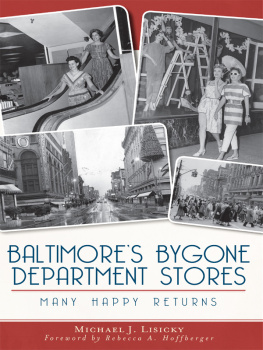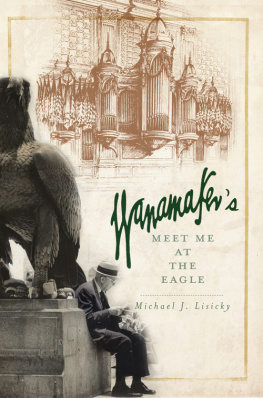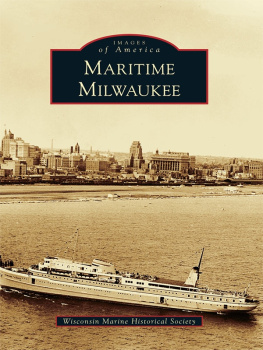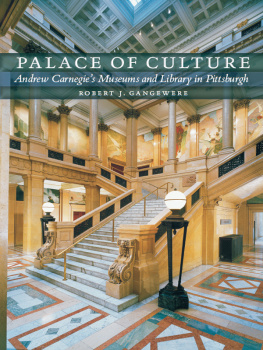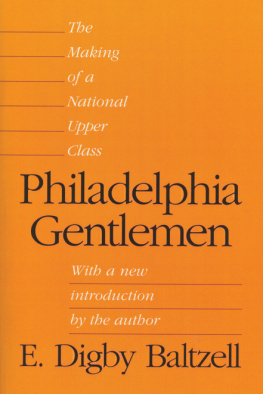If [Hutzlers] doesnt become the hottest local holiday gift this year, Ill be very surpised. Its beautifully written, obviously by someone who has an affinity for department stores.
Frederick N. Rasmussen, Baltimore Sun
To hear Mr. Lisicky talk, writing this book was simply his destiny.
Alan Feiler, Baltimore Jewish Times
Lisicky spins the tale of the 132 year old store whose downtown store and spawns in Towson offered fashion and style before closing one by one, until all that was left was a memory.
City Paper (Baltimore)
If youre interested in department store history, buy his books.
David Sullivan, Philadelphia Inquirer
The position of Official Historian of East Coast Department Stores is no longer available, now that author Michael J. Lisicky has followed up Hutzlers: Where Baltimore Shops with Wanamakers: Meet Me at the Eagle.
Patrick Rapa, Philadelphia City Paper
[Wanamakers is] a loving history of the store that once defined Center City Philadelphia.
Elizabeth Wellington, Philadelphia Inquirer
Wanamakers is a wonderfully affectionate look at the Market St. store whose name, for generations, was symbolic of Philly.
Ronnie Polaneczky, Philadelphia Daily News
The time is ripe for a book about Gimbels. Lisicky has built a national reputation as a department store expert, regularly answering questions online and as a radio talk-show guest.
Elizabeth Wellington, Philadelphia Inquirer
[Gimbels] is a passionate history of an iconic store.
Jim Higgins, Milwaukee Journal Sentinel
Lisicky recalls the glory days of Gimbels. It is an evocative book filled with photos and recipes.
Marylynn Pitz, Pittsburgh Post-Gazette
Lisicky opens the door to a legendary department store.
Jill Radsken, Boston Herald
[Retail] fans can now take a stroll down memory lane with Lisicky, a department store historian.
Jan Gardner, Boston Globe

Published by The History Press
Charleston, SC 29403
www.historypress.net
Copyright 2012 by Michael J. Lisicky
All rights reserved
First published 2012
e-book edition 2012
ISBN 978.1.61423.662.7
print ISBN 978.1.60949.667.8
Library of Congress CIP data applied for.
Notice: The information in this book is true and complete to the best of our knowledge. It is offered without guarantee on the part of the author or The History Press. The author and The History Press disclaim all liability in connection with the use of this book.
All rights reserved. No part of this book may be reproduced or transmitted in any form whatsoever without prior written permission from the publisher except in the case of brief quotations embodied in critical articles and reviews.
To Danny and Sue Sachs and George Hutzler Bernstein.
Contents
Foreword
For beautiful and good mothers everywhere.
To explain the wild success of Michael Lisickys first book on Baltimores Hutzlers department store and its national approximates, one need only read educator and author Richard Louvs bestselling Last Child in the Woods. Both Lisicky and Louv bring to the minds of us Boomers our most powerfully happy, suspended-in-time, childhood moments. For Louv, it was all about the great and joyful quiet learning accomplished by our time spent building forts in the woods, playing in streams, climbing trees or just out and about in the summer night air gleefully catching lightning bugs with our friends. The gift of the woods child experience has now been grievously eclipsed by media-hyped fear of strangers, litigious concerns about trespassing and disrupting property in any way and the mega loss to todays children of unsupervised alone time away from adults.
Author, musician and storyteller Michael Lisickys passion for emporiums like Hutzlers, which he experienced as the youngest of three brothers born to a mother who knew and savored her department stores like Robert Parker knows his fine wines, has been palpably focused to recall his happiest mom/kid adventure, inherent in a ride away from homeen route in his moms station wagon to a destiny whose sheer expectation had already put a big smile inside the great Mothers heart.
Here were our mothers, not seeking the exclusive friendship of going shopping with an adult girlfriend, but who actually wanted us in on the fun. They really liked getting us all nicely dressed, sharing the promise of a delicious meal; and we, we loved the hum of our mothers as they played enthused docent to usinclusive of toy departments and something called the Notions Departmentto these warmly run, welcoming and supremely personal establishments. The Hutzler charge card, the only one my mother had (it looked like a metal dog tag), was our pass to extra belonging.
Let me say this: I loved Michaels first Hutzlers book that I devoured cover to cover. Yet a few details of what I loved most, that which was imprinted on my heart, were missing! Where were the figurative childrens menu desserts? The upside-down cone-headed ice cream clown and, in the fall, the ice cream Judy Witch special, with its inserted hooked cookie witch nose, raisin eyes, maraschino cherry mouth and lace paper doily witch hat brim, secured at the base of the sugar cone hat (that could be dropped to be the clown collar for the clown version of the same ice cream decorated dessert)? This place played with food, and our moms and us kids both just loved it! The Hutzlers bakery, just to the right of the Towson restaurant entry, with its pink cardboard goodie boxes, was where my mom first introduced me to red velvet cake and my favorite, pink strawberry and minced cherry icing cupcakes. From there, we took sticky buns home to Dad to soften the blow of any charges!
My beautiful mother, Peggy Jane, was far from a privileged housewife. She worked hard, strung our laundry on clothesline (another bygone, fresh-smell clothes treat) and did all the household cooking and cleaning. Stuck without her own car out in the Greenspring Valley suburbia, we all savored these Dad-driven drop-offs until she learned to drive in her early forties. This is the same mom who taught me yoga that she herself only learned from a book, and who introduced me to another great escape, the love of reading, and laughter. So the monthly trip, by her side, with her one beige cashmere coat, was Mom at her much-deserved, indulged best. Both Michael and I cant believe how special going out with our mothers made us feel, as the times spent together at such shopping pavilions were our moms personal peak experiences of civility and carefree fun. I remember the fashion shows in the Towson lunchroom, with clothes modeled by live models (one of whom was Aunt Emily, Congressman Dutch Ruppersbergers magnificent grandmother, and another a more severe-looking model with cropped black hair with a memorable stripe up the middle like a skunk!). I loved the mural of an old-fashioned Victorian country fair, painted in soft yellows, pinks and greens, along the back counter wall of the Towson Hutzlers counter, which we sat at only when the dining room was completely full. We loved eating the Hutzlers cup of crab vegetable soup and the warm little dinner rolls. I especially lovedagain a figurative foodtheir Raggedy Ann Salad with its shaved carrot red hair.
Today, as a museum founder and director, I am struck by the ever-respectful warm welcome by handsome Towson Hutzlers general manager Mr. George Bernstein and all the excruciating attention to beautiful and fun detail at every turn, which infected me in the most delicious way and surely informed me of lessons I have put into practice at our American Visionary Art Museum. I also remember the exotic, built-in fish tank near the boys clothing department that my mother explained helped keep the boys calm and well-behaved. In the girls department, I saw the obvious thyroid disorder of a super skinny, Marty Feldmanesque (due to her enormous bulging eyes) saleswoman. At first, I was scared to death of her, but she was so nice that fear quickly went away. I saw my first albino young man out with his beautiful African American mother there too, and I thought they looked so wonderfully happy being out as we were. My sister Phyllis and I saved and saved and bought a gilded sunburst mantel clock for my parents, which we could only afford because it was missing a ray and discounted to fourteen dollars. But our parents kept that broken clock in a place of honor for many years hence.
Next page
